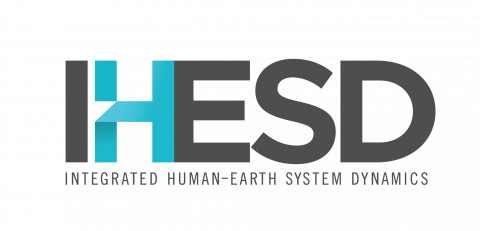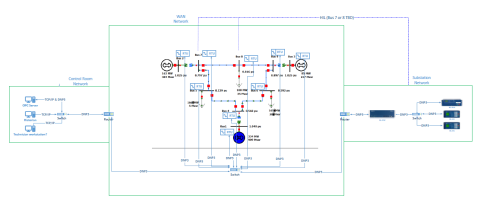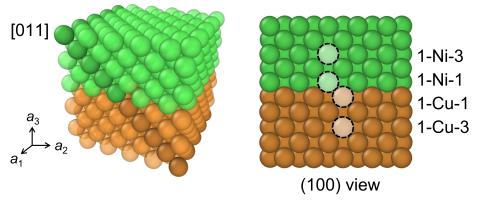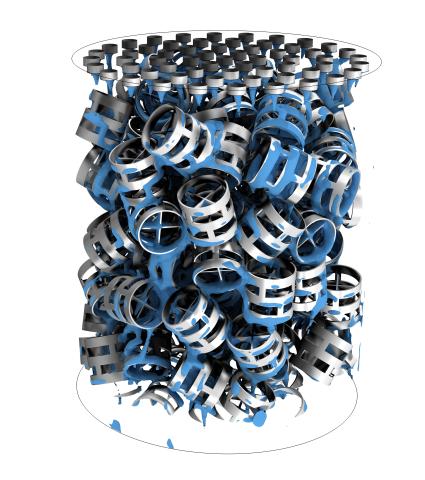The year 2014 solution files are based on model calibration effort based on inputs and data from Year 2014 as described in Khangaonkar et al. 2018). It includes water surface elevation, currents, temperature and salinity at an hourly interval. These netcdf files with 24 hourly records include...
Filter results
Category
- Scientific Discovery (14)
- Biology (9)
- Human Health (9)
- Earth System Science (4)
- Energy Resiliency (4)
- National Security (4)
- Computing & Analytics (3)
- Renewable Energy (3)
- Atmospheric Science (2)
- Data Analytics & Machine Learning (2)
- Integrative Omics (2)
- Coastal Science (1)
- Computational Mathematics & Statistics (1)
- Computational Research (1)
- Cybersecurity (1)
- Distribution (1)
- Electric Grid Modernization (1)
- Energy Efficiency (1)
- Energy Storage (1)
- Grid Analytics (1)
- Grid Cybersecurity (1)
- High-Performance Computing (1)
- Solar Energy (1)
- Visual Analytics (1)
- Wind Energy (1)
Content type
Dataset Type
- (-) Simulation Results (17)
- (-) Microarray (9)
- Omics (86)
- Transcriptomics (51)
- Proteomics (39)
- Sequencing (39)
- Metabolomics (28)
- Lipidomics (26)
- Amplicon (16S, ITS) (15)
- Metagenomics (9)
- Genomics (4)
- Computed Analysis (3)
- ChIP-seq (2)
- Geospacial (2)
- Staff (2)
- Cybersecurity (1)
- Electromagnetic Spectrum (1)
- Mass Spectra (1)
- Microscopy (1)
- Phenomics (1)
- Whole genome sequencing (WGS) (1)
Tags
- Virology (9)
- Health (7)
- Virus (7)
- Viruses (7)
- Viral Experiment (2)
- Cybersecurity (1)
- Electrical energy (1)
- Energy Equity (1)
- Energy Storage (1)
- High-Performance Computing (1)
- Host Response (1)
- Lethal Human Viruses (1)
- Machine Learning (1)
- MERS-CoV (1)
- Multi-Omics Viral Data (1)
- MultiSector Dynamics (1)
- Output Databases (1)
- Predictive Modeling (1)
- Processed Data (1)
- Resource Metadata (1)
- Secondary Dataset Download (1)
- Solar photovoltaics (1)
- Synthetic (1)
These GCAM v4.3 SSP-RCP-GCM Output Databases are made available under the Open Data Commons Attribution License: http://opendatacommons.org/licenses/by/1.0/ . GCAM v4.3 SSP-RCP-GCM plausible solution databases. Supplemental dataset to: Graham N.T., M.I. Hejazi, M. Chen, E. Davies, J.A. Edmonds, S.H...
Category
A trained neural net potential (NNP) was use to simulate shear in the [011] direction in Cu-Ni multilayers. We applied the NNP to a Monte Carlo scheme to generate parallel shear simulations, demonstrating the range of possible trajectories that can be obtained due to speedups provided by the NNP...
Simulated x-ray absorption spectra calculated with the FEFF code for various models of Cu incorporated into the iron oxide mineral hematite. The structures are drawn from publically available ab initio molecular dynamics simulations.
This dataset includes one baseline and three cybersecurity based scenarios utilizing the IEEE 9 Bus Model. This instantiation of the IEEE 9 model was built utilizing the OpalRT Simulator ePhasorsim module, with Bus 7 represented by hardware in the loop (HiL). The HiL was represented by two SEL351s...
ProxyTSPRD profiles are collected using NVIDIA Nsight Systems version 2020.3.2.6-87e152c and capture computational patterns from training deep learning-based time-series proxy-applications on four different levels: models (Long short-term Memory and Convolutional Neural Network), DL frameworks...
Cu-Ni bilayers either without defects (pristine) or with a single vacancy in the nickel layer at the interface (1-Ni-1), in the copper layer at the interface (1-Cu-1), in the central nickel layer (1-Ni-3), or in the central copper layer (1-Cu-3) were relaxed under the application of shear in the...
Supporting data and code uploaded to DataHub for "How do the weather regimes drive wind speed and power production at the sub-seasonal to seasonal timescales over the CONUS?" Created by Ye Liu*, Sha Feng*, Yun Qian, Berg K Larry, Huilin Huang *POC: Ye Liu, Ye.Liu@pnnl.gov Sha Feng, sfeng@pnnl.gov --...
Category
CO2 Capture CFD (C3FD) dataset contains STAR-CCM+ simulations of a CO2-capturing solvent flowing across packing structures in a column. This dataset contains 50 2D and 50 3D simulations, each of which spans 500 timesteps. The 2D and 3D simulation meshes have 150,073 and 3,129,815 nodes, respectively...
As energy prices rise and climate change brings more extreme and frequent days of heating and cooling, households must allocate more of their income to energy bills, increasing their energy burden. Many strategies are employed to alleviate high energy burden, such as weatherization, energy...
Category
Federal and state decarbonization goals have led to numerous financial incentives and policies designed to increase access and adoption of renewable energy systems. In combination with the declining cost of both solar photovoltaic and battery energy storage systems and rising electric utility rates...










